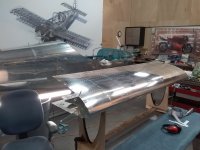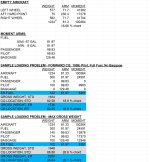Sky Designs
Active Member
Sky Designs is pleased to announce that ER Fuel Tank Kits for RV-10 and RV-14 are now available.
Our ER tanks are the same as "standard" but extend two rib-bays further outboard to allow for approximately two hours greater endurance. They allow (optionally) for a second fuel quantity sender in the outboard-most rib bay of each tank. The design also incorporates a "fill-tab" for partial fueling -or de-fueling if you're a "Scrappy" wannabe - to a known level.
Pricing and other details can be found at https://www.skydesigns.aero/products
Our ER tanks are the same as "standard" but extend two rib-bays further outboard to allow for approximately two hours greater endurance. They allow (optionally) for a second fuel quantity sender in the outboard-most rib bay of each tank. The design also incorporates a "fill-tab" for partial fueling -or de-fueling if you're a "Scrappy" wannabe - to a known level.
Pricing and other details can be found at https://www.skydesigns.aero/products






